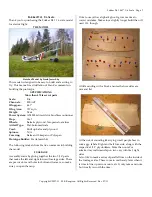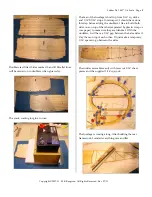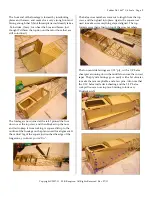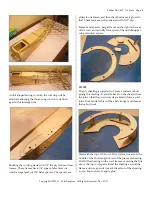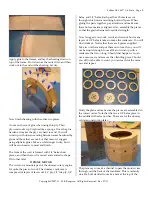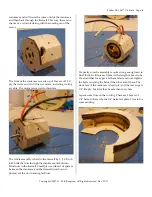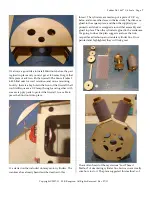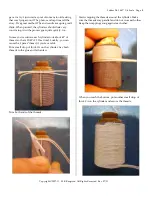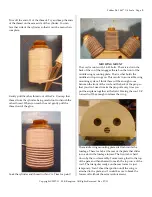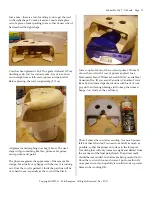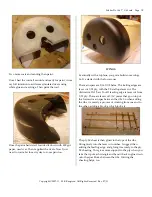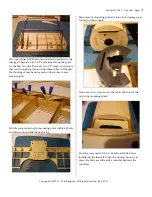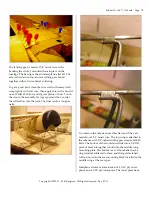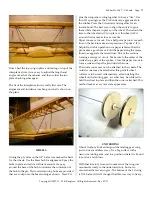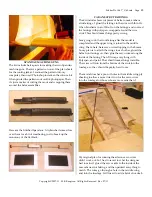
Fokker
Dr.1
46.7”
1/6
Scale
Page
5
Copyright©
2007
‐
11
M.K.
Bengtson
All
Rights
Reserved
Rev
07/11
Apply
glue
to
the
frames,
and
lay
the
sheeting
down
on
top
of
the
frame.
Pin
it
down
at
the
center
first,
and
then
work
out
to
the
ends
of
the
sheeting.
Let
dry.
Now
finish
sheeting
with
the
other
two
pieces.
A
note
on
choice
of
glue
when
using
thin
ply.
Thin
plywood
soaks
up
CA
glues
like
a
sponge.
Once
the
glue
hardens,
it
makes
the
ply
very
hard
to
sand.
You
will
wind
up
with
uneven
sanding
between
areas
hardened
by
glue
and
those
that
are
not.
For
that
reason,
I
suggest
using
aliphatic
glues.
Takes
a
while
longer
to
dry,
but
it
will
be
much
easier
to
sand
and
finish.
The
front
of
the
cowl
is
formed
with
1/4
ʺ
balsa
sheet
pieces,
and
then
the
cowl
is
carved
and
sanded
to
shape.
I
ʹ
ll
do
that
later.
DUMMY
MOTOR
The
Axi
motor
mount
is
part
of
the
dummy
rotary
engine.
It
ʹ
s
quite
the
piece
of
work.
The
dummy
crankcase
is
composed
of
layers
of
laser
cut
1/16
ʺ
ply,
1/8
ʺ
lite
ply,
1/8
ʺ
balsa,
and
1/4
ʺ
balsa.
Each
part
has
3
holes
laser
cut
through
which
motor
mounting
bolts
will
pass.
When
gluing
the
parts
together,
pay
attention
and
make
sure
these
holes
are
always
aligned.
Also,
assemble
the
pieces
so
that
the
grain
alternates
for
added
strength.
Now
I
suggest
you
count,
count,
and
recount
how
many
layers
of
1/4
ʺ
balsa
it
takes
to
make
the
crankcase.
You
will
find
it
takes
6.
Notice
that
there
are
8
pieces
supplied.
Take
two
of
them
and
put
them
out
of
reach,
so
you
will
not
be
stupid
enough
to
use
all
8
and
wind
up
with
a
crankcase
that
is
too
long.
Should
that
happen,
you
can
use
a
razor
saw
and
remove
the
offending
piece.
Should
you
still
not
be
able
to
count,
you
can
reach
for
the
razor
saw
and
repeat.
Study
the
plan
and
make
sure
the
pieces
are
assembled
in
the
correct
order.
Note
that
there
is
a
1/8
ʺ
balsa
piece
in
the
middle
with
extra
notches.
These
are
for
the
dummy
cylinder
construction
later.
The
plans
say
to
make
a
channel
to
pass
the
motor
wires
through,
out
the
back
of
the
crankcase.
This
is
certainly
do
‐
able,
but
I
decided
to
make
a
hole
at
the
top
of
the


